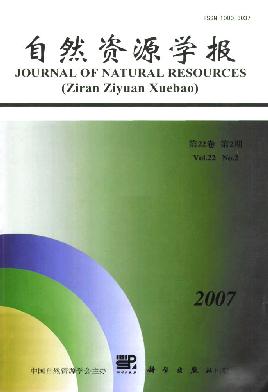Special Column:Celebration of the 70th Anniversary of IGSNRR, CAS
LI Li-juan, JIANG De-juan, LI Jiu-yi, LIANG Li-qiao, ZHANG Li
With rapid economic development and population growth,land use and land cover change(LUCC)have great effects on hydrological processes.The research in this field has been the focus of attention and the international frontier.In this paper,the study methods of hydrological response to land use and land cover change were analyzed,including experimental method,time series analysis method of hydrological characteristic parameters,hydrological model method and combination of multi-methods,and its progress was reviewed and discussed from points of view of driving forces of LUCC,such as afforestation and deforestation,urban and agricultural development as well as soil and water conservation.Some conclusions of this paper were drawn as follows:①Imperious area extension driven by rapid urban development could change the urban water balance,and then increase runoff coefficient,flood peak flow and its frequency,and contrarily decrease the ground recharge,but due to different levels of urbanization development,hydrological effects would make a certain difference.②Studies on hydrological response to soil and water conservation generally showed that,the underlying surface conditions alteration by soil and water conservation could decrease annual runoff and flood peak flow,and increase infiltration and runoff in the non-flood season,but due to different geographic locations,climatic conditions and so on,hydrological effect of soil and water conservation in different regions or watersheds also showed a certain difference.③In the respect of hydrological response to afforestation and deforestation as well as agricultural development,the results made a great difference due to the diversities of spatial scale,regional location,climatic conditions,and study objectives.Therefore,many affecting factors need to be considered comprehensively,and hydrological response to land use and land cover change should be assessed correctly so as to support scientific foundations for rational allocation and sustainable development of land and water resources.
